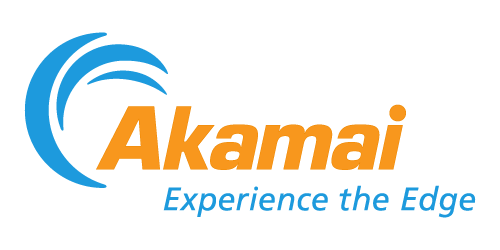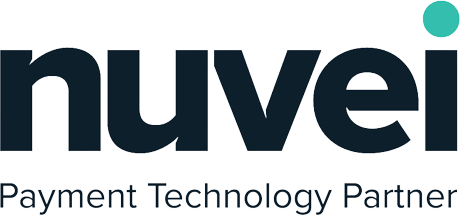Web Performance
Breaking the Boundaries for an Instant Experience.
With over 20 years of web performance experience spanning over countless verticals & use cases, we break the boundaries of off-the-shelf products and vanilla configurations to create the optimal performance stack for your business. As a lifelong partner of world-leading CDN providers, we exhaust all features and beta programs to creatively seize every opportunity to optimize your performance and costs.

Go Beyond Legacy Solutions
We at GlobalDots hunt for the most cutting edge and relevant technologies out there.
Once tested and found qualified we bring you the most certified innovative products out there for every pressing use case.

Our Web Performance Tips
Holistic analysis of your web assets is key to achieving your full performance potential. The site’s structure, types of content and user distribution all matter.

Your web performance stack should be modular, with no excessive, unutilized features. It should enable optimized traffic routing, and particularly reduce cloud egress.

Never settle for off-the-shelf solutions. Your performance can only peak with careful modifications to impact your most important metrics.

Performance optimization is a perpetual effort. Maximum speed can only be achieved with a constant alignment of configuration with changes in traffic volume, patterns, and site content.

-
What is the meaning of web performance?
Web performance refers to how quickly and efficiently web pages and web applications load and respond to user interactions. It directly impacts the user experience engagement, and the overall success of digital platforms. Web performance encompasses various technical and infrastructural factors, including server response times, network latency, resource loading times, and rendering efficiency in the browser or app.
-
Which are the most important web metrics and what is a good performance standard?
- Core Web Vitals:
- Largest Contentful Paint (LCP): Measures loading performance. Ideally, LCP should occur within 2.5 seconds.
- First Input Delay (FID): Gauges interactivity. Aim for a delay of less than 100 milliseconds.
- Cumulative Layout Shift (CLS): Evaluates visual stability. A CLS score of less than 0.1 is optimal.
- Time to First Byte (TTFB):
- Measures the time it takes for the browser to receive the first byte of data from the server. A lower TTFB (under 200ms) indicates better server responsiveness.
- First Contentful Paint (FCP):
- Tracks the time it takes for the first visible element (e.g., text, image) to render on the screen. Lower FCP times improve perceived performance.
- Speed Index:
- Assesses how quickly the content on a page is visually displayed. Lower values are better.
- Total Blocking Time (TBT):
- Measures the total amount of time the browser is blocked and unable to respond to user inputs. Lower TBT scores improve interactivity.
- Page Size and Requests:
- Total weight of resources (images, JavaScript, CSS, etc.) and the number of HTTP requests made. Optimized resources lead to faster loading.
- Time to Interactive (TTI):
- Indicates when a page becomes fully interactive. A good benchmark is under 5 seconds.
- Core Web Vitals:
-
Why is web performance important for SEO?
In the context of SEO, web performance is critical because search engines like Google factor site speed and user experience metrics into their rankings. Websites that perform poorly risk lower visibility in search engine results. Indeed, search engines prioritize websites that provide a fast, stable, and interactive user experience. Poor web performance metrics can lead to:
- Lower rankings in search results (especially since Core Web Vitals are now ranking signals).
- Higher bounce rates, as users leave slow-loading sites.
- Reduced credibility and trust, which can indirectly harm organic traffic.
-
How do I check my web application performance?
Checking web application performance isn’t a one-time task. It requires continuous monitoring and optimization, integrating performance metrics into your overall development lifecycle. By combining automated tools, real user data, and proactive testing, you can ensure your application delivers a fast, secure, and seamless experience for users and meets SEO requirements. Both Synthetic Monitoring and Real User Monitoring (RUM) are methodologies used to analyze and optimize web application performance. Synthetic monitoring simulates user interactions with a web application by using scripted tests run from predefined locations and devices. These tests mimic real-world user behavior to measure performance under controlled conditions. RUM is a passive monitoring technique that collects performance data from actual users interacting with the web application in real time. It provides insights into how the application performs under real-world conditions.
-
How to increase speed on a website?
Improving website speed requires a combination of advanced techniques, and focusing on key aspects like DNS, CDNs, image optimization, synthetic monitoring, and real user monitoring (RUM) can make a significant impact.
DNS performance optimization is critical. Faster DNS resolution reduces the time it takes for browsers to locate your server. Using premium DNS providers, implementing DNS caching, and configuring DNS prefetching for critical resources can ensure smoother navigation and quicker resource loading for end users.
A Content Delivery Network (CDN) plays a vital role by distributing your website’s static and dynamic content to edge servers closer to users, drastically reducing latency. Beyond simply caching content, modern CDNs offer advanced features such as dynamic content acceleration and HTTP/3 support, ensuring that even server-generated responses are delivered faster. By leveraging edge computing capabilities within a CDN, you can execute certain logic, such as personalization or redirects, directly at the edge, cutting down round trips to your origin server.
Image optimization is another cornerstone of performance enhancement. By converting images to modern formats like WebP or AVIF, you achieve better compression with minimal quality loss. Pairing this with responsive image techniques ensures that users only download images suited for their screen size and resolution. Lazy loading can further improve speed by deferring the loading of images that aren’t immediately visible, while CDNs can dynamically resize and compress images, simplifying the optimization process.
Synthetic monitoring complements these efforts by providing proactive insights into website performance. Through scripted tests run across different geographies and devices, synthetic monitoring highlights bottlenecks like slow-loading pages or high TTFB before they impact real users. This proactive approach enables you to address potential issues and ensure consistent performance.
Finally, Real User Monitoring (RUM) offers a real-world perspective by collecting data directly from users interacting with your site. Unlike synthetic tests, RUM provides insights into how diverse conditions, such as device types and network speeds, affect performance. These metrics help prioritize fixes that will have the greatest impact on user experience.
By integrating these approaches—using CDNs to improve delivery, optimizing images for size and format, leveraging synthetic and real user monitoring for proactive and reactive insights, and enhancing DNS resolution speed—you can create a high-performing website that delivers a seamless experience to users and ranks well in search engines.






























